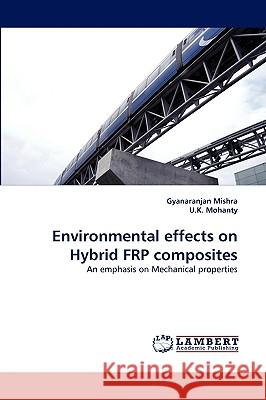Environmental effects on Hybrid FRP composites » książka
Environmental effects on Hybrid FRP composites
ISBN-13: 9783838358987 / Angielski / Miękka / 2010 / 64 str.
The present experimental study aims at assessing the effect of moisture and temperature on the mechanical properties of hybrid FRP composites. Samples of several Carbon-Glass-Epoxy hybrids were manufactured using hand layup method.Specimens were cut from the fabricated laminate according to the ASTM D2344-84(1989) standards. Some of these specimens were kept in the As-Cured condition so as to obtain the base properties. Rest specimens were then subjected to hygrothermal environment where the relative humidity was maintained at 95% and the temperature at 600C for 24,48,72,96,120 hours. These specimens were divided into groups of five. One group was subjected to cryogenic conditions at -40C for 2 hours and the other group was subjected to elevated temperature at 500C for 2 hours. These treated samples were then subjected to short beam shear test or 3 point bend test.Differential scanning calorimetry was done to find the Tg variation. Degradation of mechanical property was found to be most prominent is case of specimens subjected to elevated temperature (500C) after hygrothermal treatment. SEM analysis was done to ascertain the mode of failure.
The present experimental study aims at assessing the effect of moisture and temperature on the mechanical properties of hybrid FRP composites. Samples of several Carbon-Glass-Epoxy hybrids were manufactured using hand layup method.Specimens were cut from the fabricated laminate according to the ASTM D2344-84(1989) standards. Some of these specimens were kept in the As-Cured condition so as to obtain the base properties. Rest specimens were then subjected to hygrothermal environment where the relative humidity was maintained at 95% and the temperature at 600C for 24,48,72,96,120 hours. These specimens were divided into groups of five. One group was subjected to cryogenic conditions at -40C for 2 hours and the other group was subjected to elevated temperature at 500C for 2 hours. These treated samples were then subjected to short beam shear test or 3 point bend test.Differential scanning calorimetry was done to find the Tg variation. Degradation of mechanical property was found to be most prominent is case of specimens subjected to elevated temperature (500C) after hygrothermal treatment. SEM analysis was done to ascertain the mode of failure.











